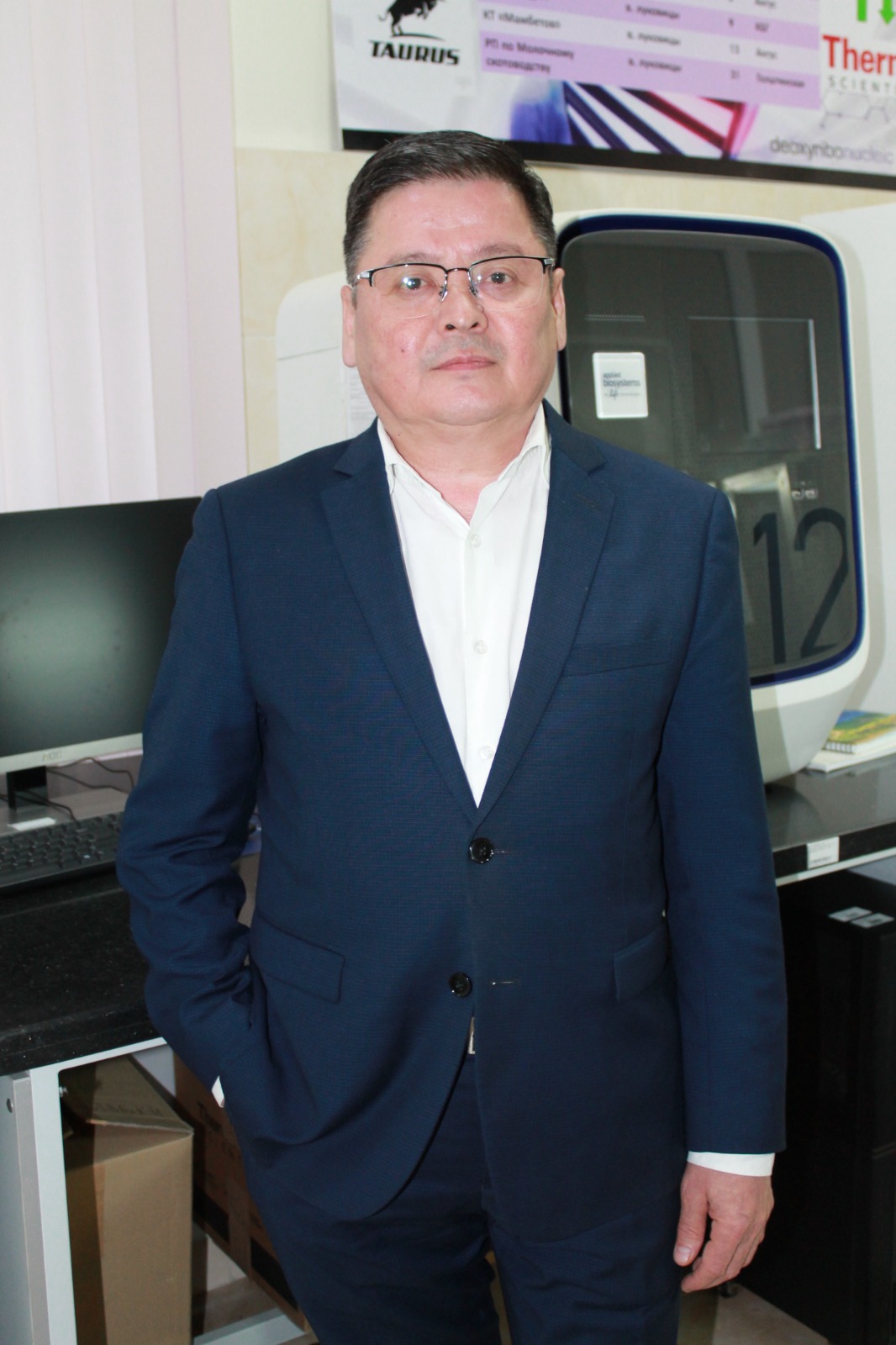Project Manager

Sandybayev Nurlan Academic degree, title: candidate of biological sciences, professor Scopus Author ID: 37000362400 Researcher ID: M-7802-2015 ORCID: 0000-0003-1814-2798
About the project
Relevance
According to WHO, the problem of microbial resistance is one of the 10 global threats to public health. The misuse and overuse of antimicrobials are factors in the increase of drug-resistant pathogens.
Pneumonia, sepsis, dysentery, and tuberculosis, are just a few of the diseases that physicians around the world encounter with AMR. With the advent of COVID-19, the AMR situation has only worsened. Between 2019 and 2020, deaths from AMR infections in the United States increased by at least 15%. More than 19 000 people died from viral pneumonia in Kazakhstan during COVID-19, and more than 6.5 million people worldwide.
The control of antibiotic-resistant bacteria is based on microbiological and phenotypic susceptibility to antimicrobials. This approach has disadvantages associated with low sensitivity, execution time, and the inability to grow non-culturable microorganisms. Molecular methods, including NGS, offer tremendous opportunities for the identification of AMR.
Countries that have successfully used NGS technology for AMR surveillance include the United States, the United Kingdom, Canada, Europe, Latin America, and Africa. Kazakhstan is also working on studying antimicrobial resistance, however, there are no data on the use of NGS to study AMR.
During the project, sputum samples will be collected from patients with pneumonia. Cultures of bacteria will be obtained and sensitivity to antimicrobials will be established by the classical disk diffusion method. DNA will be isolated from sputum and bacterial cultures, and targeted NGS and WGS will be carried out to identify pathogens and AMR genes. Will compare genomic and phenotypic data on the identification of pathogens and the presence of AMR genes.
The project will be the first in Kazakhstan. The implementation of the project will allow an assessment of NGS to use monitoring and surveillance of AMR.
Goal
The aim of the project is to identify AMR genes and metagenomic analysis of sputum from patients with pneumonia using NGS of native samples and bacterial cultures, and to compare data obtained by WGS and targeted NGS with the classical disk diffusion method of detection antimicrobial susceptibility (EUCAST standard).
Results expected and achieved
During the project implementation, the following results will be obtained:
Because of the project implementation, pure cultures of microorganisms isolated from the sputum of people with pneumonia, resistant to antibiotics based on the classical disco-diffusion method (EUCAST standard) will be obtained.
This project will use three NGS technologies:
- Targeted NGS. Targeted sequencing studies will identify AMR genes present in bacteria, both in initial samples (sputum) and in culture materials.
- Whole genome sequencing. Using this technology, the taxonomic and genomic context of the PPP genes in pure bacterial culture samples will be obtained. Information on the AMR genes and their localization will be obtained, as well as the ability to identify new AMR genes.
- Metagenomic analysis. This technology will be used to analyze the diversity of bacteria present in sputum and culture materials based on 16S RNA nucleotide sequence analysis. A taxonomic analysis is presented.
The results of microbiological data and NGS will allow a comparative analysis of genomic and phenotypic profiles for pathogen identification and the presence of AMR genes and assess the suitability of NGS technology for detecting antibiotic resistance genes.
The proposed project will be the first, pilot study in the Republic of Kazakhstan. Successful implementation of the project will allow the evaluation of NGS for the use of monitoring and surveillance of AMRs at the national level, including health, veterinary, food, and environmental sectors, within which the "One Approach" recommended by WHO for a comprehensive study of the spread of AMRs can be applied.
From a scientific perspective, the results of this project are expected to contribute significantly to the development of applied research that controls the spread of antibiotic-resistant bacteria. This pilot project will form the basis for further research on the detection of AMR genes by NGS in various environmental media.
The project will train qualified specialists in molecular biology, in particular in the application of high-throughput sequencing technology.
The results of the project will be disseminated to potential users, communities of scientists, and the public through publications in leading-ranking journals, at national (including those organized by the authorized body) and international conferences, as well as through scientific and public social networks on the Internet.
The data obtained in the framework of the project will be the basis for further scientific research in the framework of national and (or) international scientific and (or) research competitions.
Information for potential users
A practical outcome of this project is to expand the possibilities of using NGS not only in public health, but also in the veterinary, food, and environmental sectors, where a unified approach can be applied to the comprehensive study of the spread of AMRs in the environment.
Research team members
Strochkov Vitaliy
Scopus Author ID: 37000312900
ORCID: 0000-0003-3399-2942
Yegorov Sergey
Academic degree, title: PhD
Scopus Author ID: 26434035900
ORCID: 0000-0002-7136-7921
Beloussov Vyacheslav
Academic degree, title: PhD
ORCID: 0000-0003-1922-156X
Solomadin Maxim
Academic degree, title: master
ORCID: 0000-0003-4219-1055
Orkara Shyngys
Academic degree, title: master
ORCID: 0000-0002-3716-7547
Lavrinenko Alena
Academic degree, title: master
Scopus Author ID: 57193763117
ORCID: 0000-0001-9436-8778
